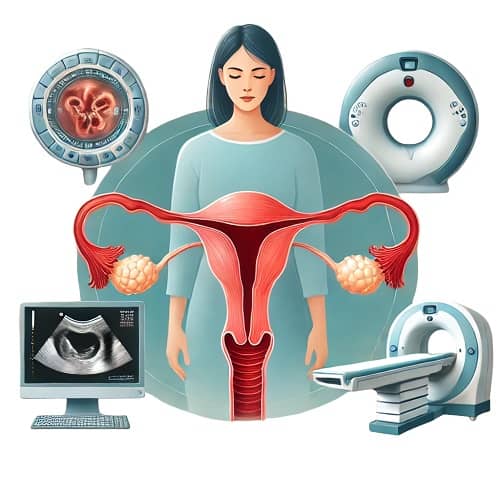Adenomyosis is a common gynecological condition. When experiencing severe menstrual pain or abnormal bleeding, many women may worry about having this condition. To confirm the diagnosis and assess its severity, doctors recommend several diagnostic tests. Below are the most commonly used examination methods to help evaluate your condition.

Table of Contents
1. Ultrasound (B-Scan)
Ultrasound is one of the most commonly used diagnostic tools.
- Abdominal or Transvaginal Ultrasound: This imaging technique allows doctors to examine the shape and structure of the uterus.
- Initial Diagnosis: Although it may not always provide a definitive diagnosis, ultrasound is often sufficient for detecting signs of adenomyosis.
2. Magnetic Resonance Imaging (MRI)
MRI provides a clearer and more detailed view of the uterus.
- High-Resolution Imaging: It is particularly useful when ultrasound results are inconclusive.
- Assessing Severity: MRI helps doctors determine the extent and severity of adenomyosis, aiding in treatment planning.
3. Hysteroscopy and Laparoscopy
These procedures allow for a direct visual examination of the uterus.
- Hysteroscopy: Involves inserting a thin camera through the cervix to inspect the uterine cavity.
- Laparoscopy: A minimally invasive surgical procedure that provides a more comprehensive evaluation and can also facilitate treatment if necessary.
- Best for Severe Cases: These methods are often recommended for complex or severe cases requiring both diagnosis and treatment.
Conclusion
The primary diagnostic methods for adenomyosis include ultrasound, MRI, and hysteroscopy/laparoscopy. Doctors will choose the most suitable test based on individual symptoms and conditions. If you experience persistent menstrual pain or abnormal bleeding, it is essential to consult a doctor for proper evaluation and early intervention.